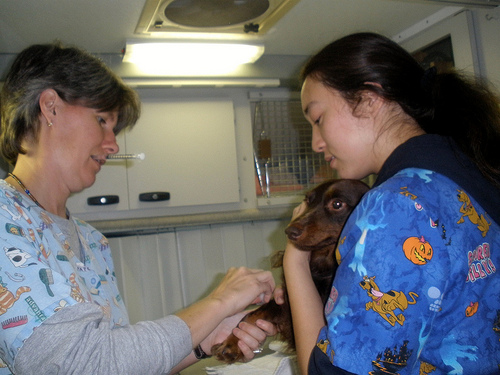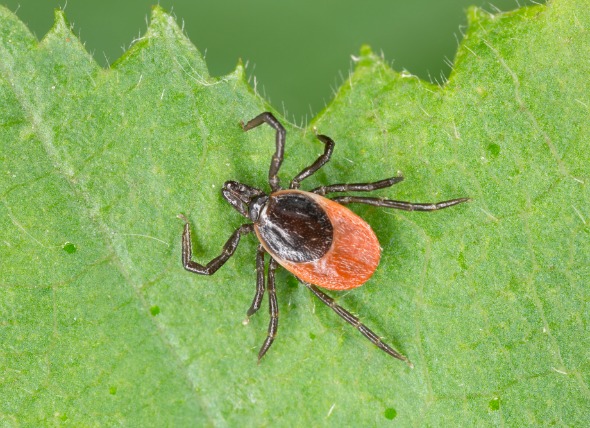For people that love dogs, yet have allergic reactions to them, there is a simple alternative. If you cannot do without a four legged friend, choosing a hypoallergenic dog is without doubt the best alternative. For those who are scratching their heads wondering what one of those is, a hypoallergenic dog is not a special breed of dog. They are dogs that generate less (hypo) allergens (allergenic) in the air, which has a lot to do with both the physical size and the length of fur of the dog.
For allergy sufferers, finding an allergy-friendly dog is probably the most sensible approach or choice. This does not mean that the dog will be completely allergy proof, but it does mean that this type of dog tends to generate less amounts of allergy causing elements. The reality is that it is impossible to find a dog that causes no degree of allergens.
Allergy reactions from dogs can consist of skin rashes, watery and itchy eyes, sneezing and a stuffy nose. More serious reactions are wheezing, asthma attacks and not being able to breathe deeply. Obviously these can be frightening reactions and choosing not to have a pet, for these reasons, clearly can outweigh the benefits of having one.
For dog lovers, who suffer with allergies that can be a very hard fact to accept. The reason some people suffer as a result of simple pet hair is because of their immune system. They are hypersensitive to the components found on the dog hair.
Many people think it is the animal hair that causes the problem, but in reality it is what attaches itself to the pet hair. The hair picks up pollen and dust attaching itself to the hair follicle. With normal movements of your dog, the elements are distracted on whatever it comes across. Hence, larger and longer haired dogs have a tendency to generate more allergens than smaller and shorter haired dogs. Therefore, the bigger the dog, the more allergy components it will distract.
If choosing a dog from a breeder, try spending at least 30 minutes playing with the dog and being in the area around the dog to see how you react to it. If you have a severe reaction in that short amount of time, then you can be pretty confident that having it as a live-in would not be a good idea.
If you are choosing a breeder who lives a substantial distance away, then one thing to consider is sending a clothing item to the breeder and asking them to place it near the dog for a day. Then get them to send it back to you in a plastic bag. Wear the clothing item or breathe in the smell and see how you react. If there is no reaction, you might want to consider visiting the breeder in person. If you do get a negative reaction, then it is best not to waste your time visiting in person. The allergic reaction would probably be worse if you were around the real thing.
Another thing you might want to consider when choosing a dog is the temperament. You want to choose a dog that will meet your needs, and be confident that you in turn, can meet their needs as well. Not only do you want to choose an allergy-friendly dog, but if you have a family, you want one that is family-friendly as well.
There are a few breeds you might want to consider: Bichon Frise, Irish Terrier and Poodles. These dogs enjoy being in family surroundings, they are considered to be excellent with children and they also make great watch dogs. Critically they also have low shedding levels. If you are a single adult, you might want to consider a dog that is happy with minimal people in their surroundings. In that situation a couple of good choices might be Chihuahua or a Portuguese Water Dog. These dogs tend to bond with one person rather than several.
There are a few dogs that you really want to stay away from because of their high shedding ability. These are Cocker Spaniels, Irish Setters, Dachshunds, Basset hounds, German Shepherds and Afghan Hounds.
If you choose an indoor dog, it is best to choose one that can be groomed regularly or that you can bath easily. It is best to bath them at least one or two times per week. This will reduce the amount of pet dander. Taking care of their hair is an important part of reducing the components that cause allergies. You can even choose a hairless dog such as the Chinese Crested, American Hairless Terrier or the Mexican Hairless.
Some people claim that certain breeds bring out the worst in their allergies than others. In choosing a breed, be open to finding the best one that suits you and also fits in with your lifestyle.

 Veterinary Specialists: Who Are They, Really
By T. J. Dunn, Jr., DVM
Tuesday, September
Veterinary Specialists: Who Are They, Really
By T. J. Dunn, Jr., DVM
Tuesday, September
 Understanding the Tick Life Cycle
By Jennifer Kvamme, DVM
Summertime is prime
Understanding the Tick Life Cycle
By Jennifer Kvamme, DVM
Summertime is prime
 The Right Foods for Puppies and Kittens
Puppies and kittens need certain nutrients
The Right Foods for Puppies and Kittens
Puppies and kittens need certain nutrients
 Best Natural Foods for Puppies: What to Look For
By Diana Bocco
More and more pet parents are looki
Best Natural Foods for Puppies: What to Look For
By Diana Bocco
More and more pet parents are looki
 Determining the Best Age at Which to Spay or Neuter a Dog: An Evidenced-Based Analysis
When Should You Get Your Dog Spayed or Neutered?
&
Determining the Best Age at Which to Spay or Neuter a Dog: An Evidenced-Based Analysis
When Should You Get Your Dog Spayed or Neutered?
&